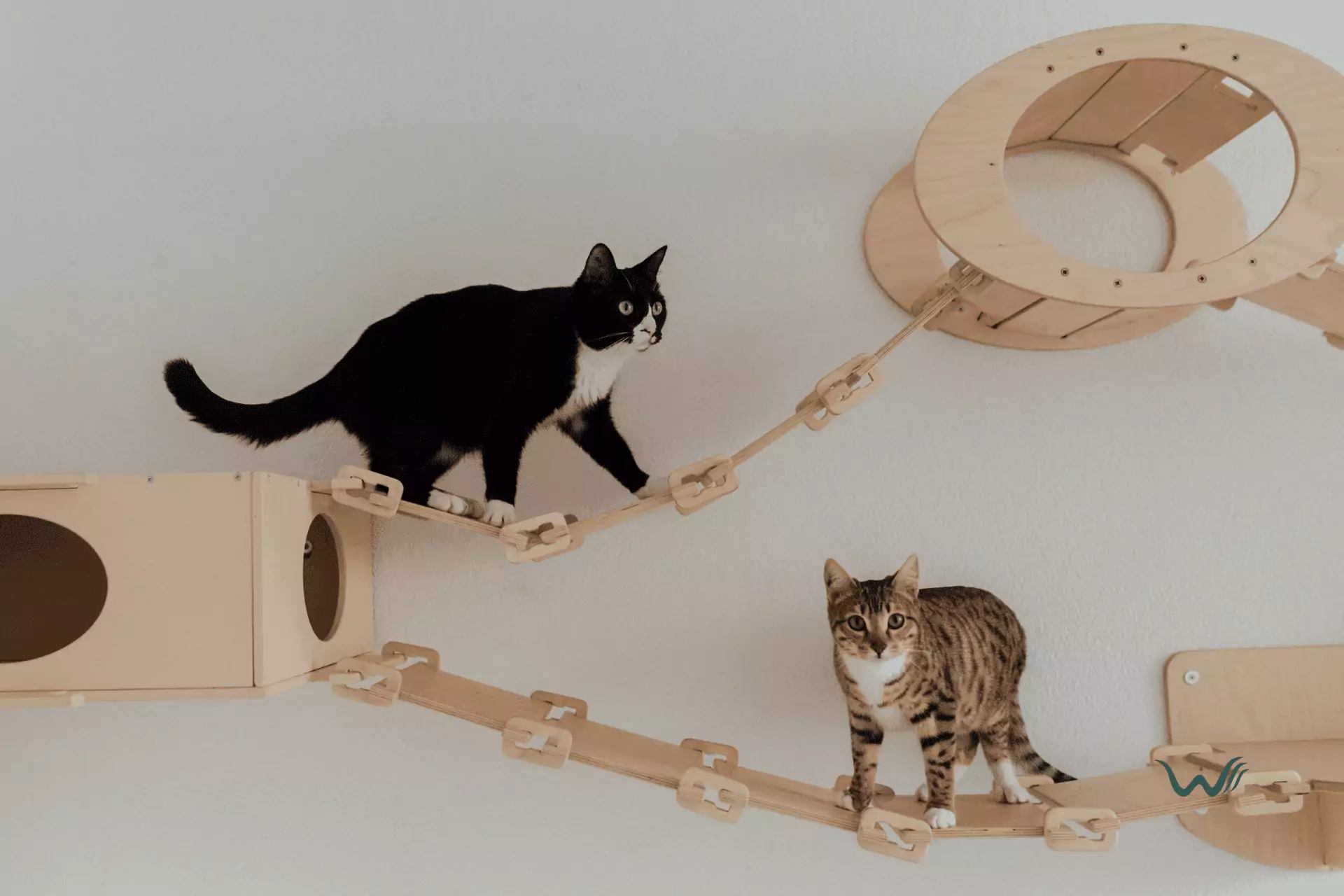

What Are The Costs Of Owning A Cat?
by Haley Mills
Last updated: July 25, 2025
Verified and Approved by:
Angela Morris,
MSW, LCSW
Fact Checked

Owning a cat can bring immense joy and companionship to your life, but it’s important to remember that it also comes with financial responsibilities. From the initial adoption costs to ongoing expenses like food and medical care, being a cat owner entails a range of financial commitments. In this article, we will explore the various costs associated with owning a cat, so you can make an informed decision and ensure that you are prepared for the financial obligations that come with being a cat parent.
When you bring a furry friend into your home, there are several initial adoption costs to consider. These may include adoption fees, spaying or neutering, vaccinations, and microchipping. While these costs can vary depending on the location and the specific cat you choose, you must budget for these expenses to ensure that you provide a safe and healthy environment for your new companion. Additionally, you must invest in essential supplies like litter boxes, scratching posts, toys, and bedding to create a comfortable and stimulating environment for your feline friend.
Initial Adoption Costs
Now that you understand the basic responsibilities of owning a cat, let’s delve into the initial adoption costs you’ll need to consider. When adopting a cat, there are a few expenses you’ll need to account for. First and foremost, there is usually an adoption fee that you’ll need to pay. This fee can vary depending on the organization or shelter you adopt, but it typically covers the cost of vaccinations, spaying/neutering, and microchipping. Some shelters may also include a starter kit with essentials like food, litter, and toys, which can help offset some of the initial costs.
In addition to the adoption fee, you’ll also need to consider the cost of getting your new feline friend settled into their new home. This may include purchasing a litter box, litter, food and water bowls, scratching posts, and a bed. These items are essential for providing a comfortable and enriching environment for your cat. Depending on the quality and brand of these items, the cost can vary. We recommend you do some research and compare prices to ensure you’re getting the best value for your money. Overall, while some initial adoption costs are associated with bringing a cat into your home, the joy and companionship they bring are priceless.
Food and Supplies
To properly care for your feline companion, you’ll need to budget for cat food and necessary supplies. The cost of cat food can vary depending on the brand and quality you choose. Provide your cat with a balanced and nutritious diet to keep them healthy and happy. Depending on your cat’s preferences and dietary needs, you can opt for dry food, wet food, or a combination of both. It’s a good idea to consult with your veterinarian to determine the best type of food for your cat. Additionally, you’ll need to budget for cat supplies such as litter, litter box, scratching posts, toys, and grooming tools. These supplies are essential for your cat’s well-being and to create a comfortable and stimulating environment for them. The cost of these supplies will vary depending on the brand and quality you choose, but it’s a smart idea to invest in durable and safe products that will last long and provide the best experience for your cat.
How Much Do Cat Owners Spend on Food and Litter Each Year?
Food and litter are two of the biggest recurring expenses for cat owners. Costs can vary depending on the type, quality, and quantity you buy.
Cat Food:
Annual food costs typically range from $100 to over $1,000, depending on whether you choose dry, wet, or specialty food. Premium brands with organic ingredients or special dietary formulas will cost more. You can find options at pet stores, online retailers, or through subscription services that offer convenience and occasional discounts.
Cat Litter:
Most cat owners spend around $200 to $250 per year on litter. The price depends on the type—clay, clumping, crystal, or odor-control—and the number of cats and litter boxes in your home. Indoor cats may require more frequent litter changes, while outdoor access can reduce usage.
Choosing products that match your cat’s needs and your budget can help you better plan for these ongoing costs.
Veterinary Care and Medical Expenses
When owning a cat, you’ll need to budget for veterinary care and medical expenses. Just like humans, cats can get sick or injured and require medical attention. Regular check-ups, vaccinations, and preventative treatments like flea and tick control are essential for keeping your cat healthy. These routine visits to the vet can add up, so it’s important to plan for them in your annual budget.
On average, Americans pay between $51 to $77 per routine visit, depending on location and clinic rates. Core vaccines typically cost around $155, and may vary based on your cat’s lifestyle or regional health risks. Vaccines help protect against illnesses like rabies, feline leukemia, and feline distemper.
Unexpected health issues or emergencies can lead to costly vet bills. Emergency surgery, diagnostic imaging, or hospitalization may be necessary in some cases. This is where pet insurance can make a difference. Annual premiums range from $232 to $383, depending on your cat’s age, breed, and the level of coverage. Most plans cover accidents, illnesses, and surgeries, though routine care and pre-existing conditions are usually excluded.
In addition to general care, cats need to be spayed or neutered, which can cost between $265 and $460, depending on location and clinic. It’s a one-time expense but an important one for your cat’s health and behavior.
Dental cleanings are another consideration. While costs vary, they often exceed $100 per session, especially when anesthesia is required. Regular cleanings can prevent gum disease, pain, and future complications.
Planning ahead for both routine and unexpected expenses helps ensure your cat receives consistent care throughout their life.
Average Cost of Cat Vaccines and Common Recommendations
Vaccinations are a key part of keeping your cat healthy and protected from preventable diseases. On average, a full set of core vaccines for your cat can cost between $150 and $160. Costs may vary depending on your location, your vet’s fees, and whether your cat needs any non-core vaccines based on their lifestyle or environment.
Commonly recommended vaccines include:
- Rabies – Legally required in most places, this vaccine protects against a fatal disease that can spread through bites.
- Feline Leukemia Virus (FeLV) – Especially important for kittens or outdoor cats, this vaccine helps prevent a contagious virus linked to serious illness.
- FVRCP Combo (Feline Viral Rhinotracheitis, Calicivirus, and Panleukopenia) – A combined vaccine that protects against three major and highly contagious diseases.
- Chlamydia and Bordetella – Often recommended for cats in multi-cat households, shelters, or boarding environments to prevent respiratory infections.
Your veterinarian can help determine which vaccines are necessary based on your cat’s age, health, and daily habits. Keeping your cat’s vaccinations up to date is a smart investment in their long-term health.
How Much Do Routine Vet Visits Cost?
Routine veterinary visits are a crucial part of keeping your cat healthy and catching potential issues early. On average, a standard check-up costs between $50 and $80, depending on your location. Prices may be higher in large cities or areas with a higher cost of living.
These visits typically include a physical exam, vaccinations, and general preventive care. It’s a good idea to call local veterinary clinics to compare pricing and see what’s included in their wellness packages.
Scheduling annual vet visits is a simple but essential way to support your cat’s long-term health—and helps avoid bigger medical bills down the line.
Grooming and Hygiene
Cats require regular grooming and hygiene maintenance, such as brushing their fur and trimming their nails. Brushing their fur helps to remove loose hair and prevent matting, which can be uncomfortable for the cat. It also helps to distribute natural oils and keep their coat healthy and shiny. Depending on the breed, some cats may need to be brushed more frequently than others. Additionally, cats’ nails can grow long and sharp if not trimmed regularly. Trimming their nails not only helps to prevent them from scratching furniture or people, but it also keeps their paws healthy and comfortable.
In addition to brushing and nail trimming, cats may also require other grooming tasks such as ear cleaning and bathing. Some cats may need their ears cleaned regularly to prevent wax buildup or infections. However, it’s important to note that not all cats enjoy having their ears cleaned, so it may require some patience and gentle handling. As for bathing, cats are generally good at grooming themselves and rarely need to be bathed unless they have a specific medical condition or have gotten into something dirty. However, if bathing is necessary, it’s important to use cat-specific products and to be cautious of water temperature and handling to ensure the cat’s safety and comfort.
Overall, the costs of grooming and hygiene for cats can vary depending on the cat’s specific needs. Some cats may require more frequent grooming and maintenance, while others may need less. Cat owners must regularly assess their cat’s grooming needs and provide the necessary care to keep their cat healthy and comfortable.
Reasons Some Owners Choose Not to Spay or Neuter
Although spaying or neutering is widely recommended to prevent unwanted litters and support long-term health, some cat owners choose to delay or avoid the procedure. Breeders, for instance, may wait until a cat produces a planned litter. Others may worry about potential health impacts, such as changes in behavior, weight gain, or risks from anesthesia. In rare cases, medical conditions can make surgery more risky. If you’re uncertain, talk to your veterinarian about what’s best for your cat.
Are the costs of owning a cat similar to the costs of owning a dog?
Owning a cat costs can be similar to owning a dog costs, with expenses for food, grooming, and healthcare. However, dogs may require more frequent grooming and larger portion sizes of food, while cats may have lower veterinarian costs. Overall, the costs of owning a pet depend on various factors such as breed and size.
Average Pet Insurance Costs for Cats by State
Pet insurance is one of those optional expenses that can be a big help when the unexpected happens. While not every cat parent opts in, many are choosing to insure their feline friends to avoid surprise vet bills.
How much does it cost? It depends on where you live, your cat’s age and breed, and the coverage you select. Most owners pay somewhere between $230 and $380 a year for a standard plan.
Factors That Influence Cat Insurance Costs
- Location: Premiums are higher in places like California, New York, and Massachusetts, where veterinary care tends to cost more. In contrast, states like Idaho, Nebraska, and Arkansas offer more affordable insurance rates.
- Coverage Type: Plans that include accidents, chronic illnesses, hereditary conditions, and even alternative therapies are more expensive than basic emergency-only policies.
- Your Cat: Older cats or certain breeds with a history of health issues may cost more to insure.
Typical Insurance Ranges by Region
- California, New York, Massachusetts: $350–$380+
- Texas, Florida, Washington: $250–$320
- Arkansas, Nebraska, Idaho: $230–$300
What Does Pet Insurance Usually Cover?
Most standard cat insurance plans include:
- Accidents and injuries
- Chronic and serious illnesses
- Hereditary and congenital conditions
- Surgeries and diagnostic tests
- Some alternative therapies like acupuncture
They typically do not cover pre-existing conditions, grooming, prescription food, or other non-veterinary care.
Is Pet Insurance Worth It?
While not required, pet insurance can bring peace of mind. If your cat ever needs surgery or develops a chronic illness, insurance can help manage those bigger costs. Providers like Trupanion, Healthy Paws, and Nationwide offer flexible plans you can customize to fit your budget and needs.
What Does Pet Insurance for Cats Typically Cover?
Pet insurance for cats can help you manage unexpected veterinary costs by covering many medical treatments. Most standard plans typically include:
- Accidents and injuries (like broken bones or emergency care)
- Illnesses, including infections or chronic conditions like diabetes
- Serious health issues such as cancer or heart disease
- Diagnostic tests, surgeries, and hospital stays
- Some alternative therapies (if included in your plan)
Certain wellness or upgraded plans may also cover routine care like annual vaccinations, flea prevention, or spaying/neutering.
What’s not covered?
Most pet insurance policies don’t include:
- Pre-existing conditions (issues present before coverage starts)
- Routine grooming or non-medical services
- Prescription food or supplements
- General wellness products
Coverage options vary by provider, so always check the details. While pet insurance isn’t required, it can offer peace of mind and protect your budget from surprise vet bills.
Average Cost of Owning a Cat by State
The annual cost of owning a cat can vary depending on where you live in the U.S. Factors like food prices, vet care, insurance, and even litter costs change from state to state.
Here’s a general overview:
- High-cost states like California, New York, and Massachusetts can see yearly expenses over $2,000 due to higher living costs and vet fees.
- Moderate-cost states such as Florida and Georgia average between $1,700 and $2,000 annually.
- Lower-cost states like Idaho, Arkansas, and South Dakota tend to stay under $1,500 per year.
On average, these costs include:
- Food and Litter: $330 to $1,800 per year depending on brand, quantity, and delivery method.
- Vet Visits, Vaccines, and Neutering: Roughly $420 to $615 annually.
- Pet Insurance: Around $230 to $400 per year, depending on coverage and location.
Taking regional costs into account can help you better prepare your yearly cat care budget—especially if you’re planning for long-term ownership.
Which States Are the Most and Least Expensive for Cat Ownership?
The cost of owning a cat can swing dramatically depending on your state. Delaware ranks as the most expensive state for cat ownership, with average annual expenses reaching close to $2,820. This includes some of the highest prices in the country for basic needs like food and litter—around $1,837 a year.
In contrast, Idaho offers the most budget-friendly experience for cat parents. There, the total yearly cost of ownership averages about $1,233, with everyday essentials like food and litter costing closer to $331.
If you’re budgeting for cat care, knowing where your state falls on this spectrum can help you plan ahead more effectively.
Unexpected Expenses
Unexpected expenses can catch you off guard when you have a furry friend like a cat. While most people are aware of the basic costs of owning a cat, such as food, litter, and veterinary care, unexpected expenses can add up over time. One of the most common unexpected expenses is related to health issues. Cats can develop various health problems, from minor issues like ear infections to more serious conditions like diabetes or kidney disease. The cost of treating these health problems can quickly add up, especially if your cat requires ongoing medication or specialized care. It is important to budget for these potential expenses and consider investing in pet insurance to help cover the costs.
Another unexpected expense that cat owners may encounter is damage to their belongings. Cats are curious creatures and can sometimes get into mischief, leading to broken or damaged items. Whether it’s knocking over a valuable vase or scratching up a piece of furniture, these incidents can result in unexpected costs for repairs or replacements. Additionally, cats are known for their love of playing and hunting, which can lead to lost or damaged toys. It’s always a good idea to set aside some extra funds to cover these unexpected expenses that may arise from having a cat as a pet.
Frequently Asked Questions
Are there any ongoing monthly expenses associated with owning a cat?
Yes, there are ongoing monthly expenses associated with owning a cat. These expenses include food, litter, toys, and regular veterinary check-ups. It’s essential to budget for these costs before getting a cat.
How often should I take my cat to the veterinarian for routine check-ups?
It would help if you took your cat to the veterinarian for routine check-ups at least once a year. Regular check-ups help ensure your cat’s overall health and help catch any potential health issues early on.
Are there any specific grooming products or tools recommended for cats?
There are specific grooming products and tools recommended for cats such as brushes, combs, and nail clippers. These help maintain their coat, prevent matting, and trim their nails.
What are some ordinary, unexpected expenses that cat owners may encounter?
Common unexpected expenses for cat owners may include emergency vet visits, medications, specialized diets, grooming services, and unexpected repairs or replacements for furniture or household items damaged by the cat.
Is it necessary to purchase pet insurance for my cat?
It is unnecessary to purchase pet insurance for your cat, but it can provide financial protection in case of unexpected medical expenses. Consider factors like your cat’s health and potential costs before deciding.
Certify Your Emotional Support Animal Today

Why You Can Rely on Us?
At Wellness Wag, we believe your pet deserves care rooted in both science and compassion. Each article is carefully researched, written in clear language for pet owners, and then reviewed by qualified professionals to ensure the information is evidence-based, current, and practical for real-life care. Our goal is to help you feel confident in making informed decisions about your pet’s health and well-being.
Reviewed by
Angela Morris, MSW, LCSW
Angela is a licensed clinical social worker with 20 years of experience in patient advocacy and community mental health. She has assisted numerous clients with ESA evaluations and brings a deep understanding of disability accommodations, ensuring that all information is accurate, supportive, and practical.

Written by :
Haley Mills
Last Updated :
July 25, 2025











